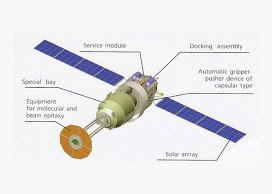Expedition 41 crew portrait on the International Space Station.
From left: ESA astronaut Alexander Gerst, Roscosmos cosmonauts Elena Serova, Maxim Suraev and Alexander Samokutyaev, and NASA astronauts Reid Wiseman and Barry Wilmore.
The rear astronauts are dressed in the Sokol suits they will wear in their Soyuz spacecraft that will take them back to Earth on 9 November. Alexander, Max and Reid were making sure their suits still fit and have no leaks after having been stored on arrival at the Station almost six months ago.
Yelena, Alexander Samokutyaev and Barry will continue working in the weightless research centre, but they will not feel lonely for long.
ESA astronaut Samantha Cristoforetti, NASA astronaut Terry Virts and Roscosmos cosmonaut Anton Shkaplerov will join their colleagues on 24 November.
Alexander Gerst commented on this image: “The International Space Station Expedition 41 crew. My favourite selfie in space!”
From left: ESA astronaut Alexander Gerst, Roscosmos cosmonauts Elena Serova, Maxim Suraev and Alexander Samokutyaev, and NASA astronauts Reid Wiseman and Barry Wilmore.
The rear astronauts are dressed in the Sokol suits they will wear in their Soyuz spacecraft that will take them back to Earth on 9 November. Alexander, Max and Reid were making sure their suits still fit and have no leaks after having been stored on arrival at the Station almost six months ago.
Yelena, Alexander Samokutyaev and Barry will continue working in the weightless research centre, but they will not feel lonely for long.
ESA astronaut Samantha Cristoforetti, NASA astronaut Terry Virts and Roscosmos cosmonaut Anton Shkaplerov will join their colleagues on 24 November.
Alexander Gerst commented on this image: “The International Space Station Expedition 41 crew. My favourite selfie in space!”






























